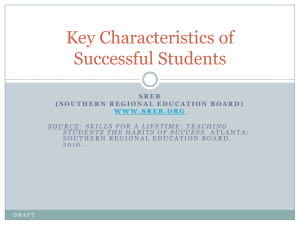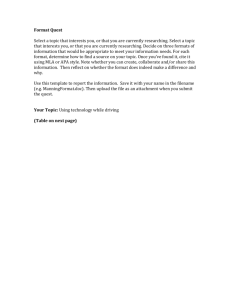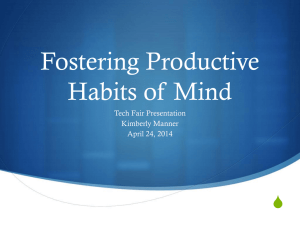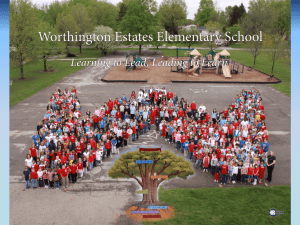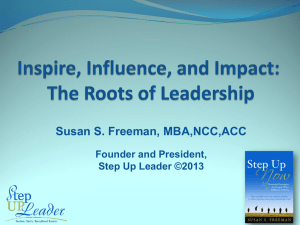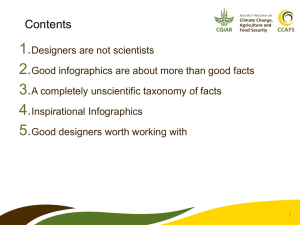PowerPoint Slides - Center for Excellence in Education
advertisement
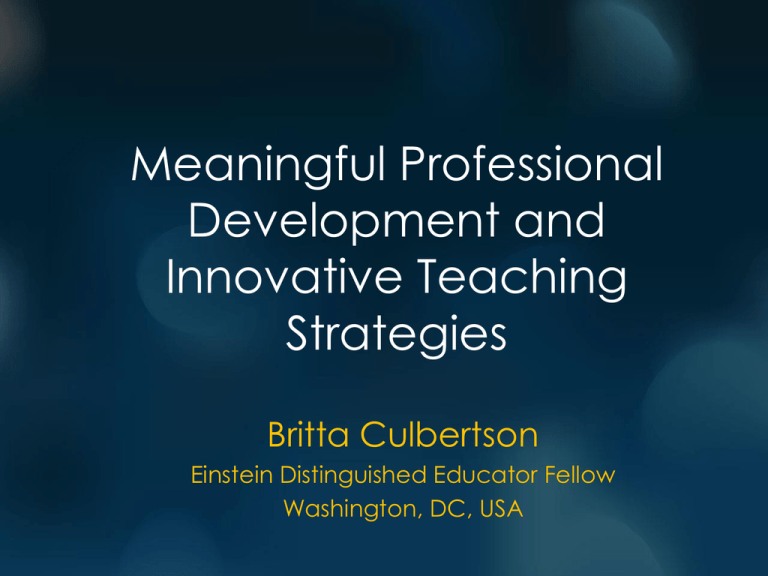
Meaningful Professional Development and Innovative Teaching Strategies Britta Culbertson Einstein Distinguished Educator Fellow Washington, DC, USA Who am I? • High school teacher in 9th and 10th integrated science and visual arts • 10 years of classroom experience • Taught for 8 years at an artsintegrated high school in Seattle, WA • Currently serving as an Einstein Fellow at National Oceanic and Atmospheric Administration (NOAA) in Washington, DC What do I do at NOAA? • Give presentations at NSTA, work at NOAA booth in exhibit hall • Science on a Sphere (SOS) curriculum, teacher professional development, help organize network meeting • Review space weather poster and curriculum • Collect government resources for APES • And more! Meaningful Professional Development India Summer Teacher Program • Short-term, exchange opportunity for U.S. HS teachers of English, Mathematics and Science • Collaborate and team-teach in your subject area with an Indian counterpart in a school in Kolkata • Medium of instruction is English • U.S. and Indian educators to work together on issues of mutual interest to their communities, schools and students India Summer Program KV Rangpuri, New Delhi India Summer Teacher Program Eligibility: • U.S. citizen, full-time employee in a U.S. school • Minimum of 3 years teaching experience (at time of application) • High school teacher of English, Math or Science Details: • Length: ~5 weeks including orientation in Washington, DC • Price: Grant includes airfare, per diem, accommodations, and shipping stipend for materials This year’s timeline: • Application opens in fall, application deadline: January 7, 2013 • Selection: February-April • D.C. Orientation: June 27-28, India: June 30-August 4 • Website: http://www.americancouncils.org/program/44/ISP/ Other PD Opportunities that Have Shaped My Teaching • Toyota International Teachers Program in the Galapagos • Local PD at NW Association for Biomedical Research – Bioinformatics in Seattle • Worked on Powers of Minus Ten App Innovative Teaching Strategies What skills do scientists need? Scientist’s Habits of Mind Museum of Paleontology (UC Berkeley) NSF Funded Project called “Understanding Science” (2012) • • • • • • • Question what you observe Investigate further Be skeptical Try to refute your own ideas Seek out more evidence Be open-minded Think creatively What are Artist Habits of Mind? Harvard’s Project Zero presents the following eight artist’s habits of mind (2003): • • • • • • • • Develop Craft Engage and Persist Envision Express Observe Reflect Stretch and Explore Understand Art World Research Supports Arts Integration DeMoss and Morris (2002) discovered that arts-integrated lessons compared to non-integrated lessons promoted: • intrinsic motivation • learning for understanding • greater problem solving opportunities for students #1 Use Art To Articulate Science Concepts Use Art To Articulate Science Concepts • • • • • • • • • • Botanical illustrations Physics of balance - mobiles Design a species Comic strips Illustrated timelines and flowcharts Analogy projects Children’s stories Illustrated field guides Theater, vignettes, tableau Infographics Botanical Illustration (and Invention) Alexander Calder Inspired Mobiles m1d1=m2d2 Design a Species with Adaptations Newton’s Laws In comic strip form Illustrated Flow Charts Cell City Analogy Students used favorite pop culture topics to create analogies (e.g. LOST and Harry Potter’s Marauder’s Map) Cell Factory Drawing Fritz Kahn – Man as Industrial Palace Translate Complex Ideas into Children’s Stories Project-Based Learning: Field Guide Development Galapagos Vignettes Student defined roles and student created props Creating Infographics Rachel Zupke’s students created infographics in Chemistry class on various topics with help from Kelsey King (a guest graphic designer) and Suzi Tucker (chemist, graphic designer and set designer) Photos courtesy of Rachel Zupke, The Center School Infographics: Final Product Images courtesy of Rachel Zupke, The Center School FREE! Online Infographic Generators • • • • • easel.ly visual.ly infogr.am labs.good.is/ piktochart.com/ Infographic found on easel.ly #2 Bring Science into the Art Classroom Bring Science into the Art Classroom • Anatomical drawings • Drawings from microscope images • Investigate artists’ depictions scientific topics and environmental messages The Science Skeleton Visits Art Class Creating Abstract Art from Magnified Images Japanese Woodblock Prints of Cells Guest Artist: Francesca Lohmann Use Art to Communicate About the Environment #3 Deconstruct and recreate through trial and error Deconstruct and Recreate Through Trial and Error • Use the design process to build a sculpture or mechanical object • Create something from scratch – original ideas • Create an emulation – work through the design process to recreate a piece – Find inspiration from TED talks, Pinterest, Blogs, museum sites Theo Jansen’s Strandbeests A student was inspired by a TED talk and built his own beast using trial and error Emulation Van Gogh, Starry Night #4 Collaborate to Create an Artful and Innovative Lesson Collaborate with an Arts Instructor, Another Teacher, or a Guest to Create an Artful and Innovative Lesson • Art teacher teaches the techniques, science teacher provides content • Can collaborate with the art teacher or a guest artist • Have the art teacher teach the skill and use art students to teach your students Arctic Information Poster Project: Reference Material Kenojuak Ashevak Theresa McFarland Mitzie Testani US Office of War, 1943 Trompe L’Oeil Sidewalk Art Teachers Wyn Pottinger-Levy and Nathan Chipps used art in math by using the principles of geometry to create perspective drawings Bonus: Integrate Science, Art, and Technology • Bring in experts! • My students worked with visualization expert Laura Lynn Gonzalez in the development of the app “Powers of Minus Ten” • They were introduced to a career possibility in the process! Challenges “But I can’t draw” • • • • • Collage from magazines Use Photoshop or clip-art Cut construction paper shapes Use word processor to print words Have student propose an alternative How Do You Assess Art? Arts Integration Research "Artist Habits of Mind." Minneapolis Public Schools (host Site): Artist Habits of Mind. Project Zero of Harvard University, 2003. Web. 04 Feb. 2013. <http://opd.mpls.k12.mn.us/uploads/T-ARTIST_HABITS_OF_MIND.pdf>. DeMoss, K. & Morris, T. (2002). How arts integration supports student learning: Students shed light on the connections. Chicago, IL: Chicago Arts Partnerships in Education (CAPE). Grotzer, T.A. (1996). Math/Science matters: Issues of instructional technique in math and science learning. Cambridge, MA: Harvard Project on Schooling and Children, Exxon Education Foundation. [Essay #1: Learning the Habits of Mind that Enable Mathematical and Scientific Behavior]. Stevenson, L. & Deasy, R.J. (2005). Third Space: When Learning Matters. Washington, DC: Arts Education Partnership. Tishman, S., Jay, E. & Perkins, D.N. (1992). Teaching thinking dispositions: From transmission to enculturation. Theory into Practice, 32(3), 147-153. Winner, E., Hetland, L. Veenema, S., Sheridan, K., Palmer, P., Locher, I. et al. (2006). Studio thinking: How visual arts teaching can promote disciplined habits of mind. New directions in aesthetics, creativity, and the arts, 189-205. Thanks for coming! Please contact me with any questions! culbertsonb@einsteinfellows.org
